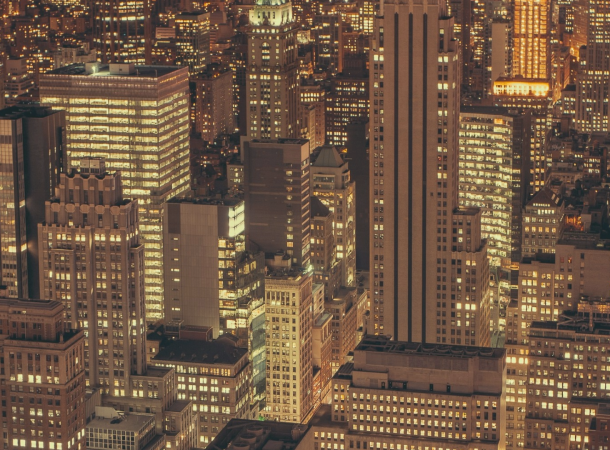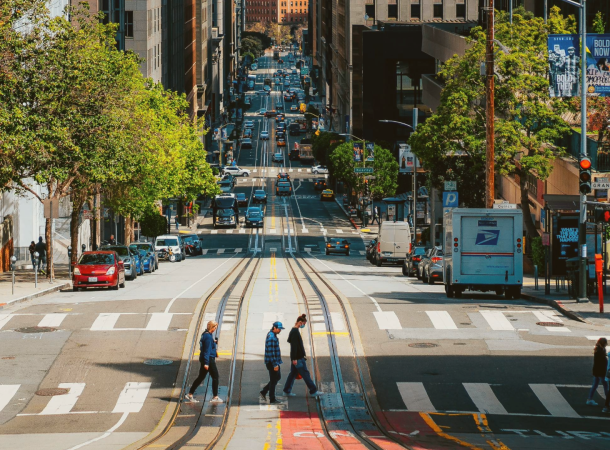
Most Dangerous Cities in the US in 2024
Amid the undulating waves of concrete and steel, some metropolises harbor an ominous truth: a perilous existence. Our journey today leads us through the one dimly lit labyrinth: from the tight-knit communities to bustling city centers, we will embark on an exploration of America’s most dangerous cities.
With no means of vilification, this discourse intends to illuminate, understand, and provoke thought. Are you prepared to walk these shadowy streets?
Criteria to Consider a City “Dangerous”
- High violent crime rates
- Elevated property crime rates
- Increased incidence of drug-related crimes
- Presence of organized crime or gangs
- Low police-to-population ratio
- High unemployment rates
- High poverty rates
- Deteriorating urban infrastructure
- Poor educational outcomes
- High levels of income inequality
- High rate of unsolved crimes
- Lack of social services
- Prevalence of illegal weapons
- Low community engagement
- High population density
- Ineffective criminal justice system
- Poor public perception of safety
- High rates of homelessness
- Lack of economic opportunity
- Overcrowded housing conditions
- High rate of unsolved crimes
20 Most Dangerous Cities in the US
The table below exhibits the 20 most dangerous cities in the United States.
Rank | City | State | Crime Rate Score | Likelihood of Encountering Danger |
20 | Myrtle Beach | South Carolina | 16.0 | 1 in 63 people |
19 | Milwaukee | Wisconsin | 16.1 | 1 in 62 people |
18 | Chester | Pennsylvania | 16.1 | 1 in 62 people |
17 | Saginaw | Michigan | 16.2 | 1 in 62 people |
16 | Rockford | Illinois | 16.2 | 1 in 62 people |
15 | Little Rock | Arkansas | 16.5 | 1 in 61 people |
14 | Wilmington | Delaware | 17.0 | 1 in 59 people |
13 | Kansas City | Missouri | 17.1 | 1 in 58 people |
12 | Gadsden | Alabama | 17.3 | 1 in 58 people |
11 | Danville | Illinois | 17.4 | 1 in 58 people |
10 | Pine Bluff | Arkansas | 18.6 | 1 in 54 people |
9 | Flint | Michigan | 19.7 | 1 in 51 people |
8 | Camden | New Jersey | 19.7 | 1 in 51 people |
7 | Memphis | Tennessee | 20.1 | 1 in 50 people |
6 | Baltimore | Maryland | 20.4 | 1 in 49 people |
5 | Detroit | Michigan | 20.6 | 1 in 49 people |
4 | St. Louis | Missouri | 20.9 | 1 in 48 people |
3 | Monroe | Louisiana | 22.8 | 1 in 44 people |
2 | East St. Louis | Illinois | 27.8 | 1 in 36 people |
1 | Bessemer | Alabama | 29.8 | 1 in 34 people |
Methodology
The distinction of being one of the most dangerous cities in the United States is a dubious ranking that shifts annually, contingent on varying data. The factors feeding this determination pivot largely around two pivotal parameters. Firstly, the frequency of violent crimes is scrutinized within the city’s boundaries. Secondly, the likelihood of a random individual becoming a subject in a crime scene is assessed.
In 2019, the city shouldering this ominous title was Bessemer in Alabama. Yet, the complexities of defining ‘dangerousness’ persist. Numerous locales of high peril fall outside the scope of this list, as their population count does not qualify them as cities. Therefore, their absence from the most dangerous city rankings doesn’t confer a seal of safety. It’s a stark reminder that safety standards and dangerousness are fluid, multifaceted, and extend beyond mere city borders.
Tips to Improve Safety in Dangerous Cities
🏠 Community Building: Strengthen neighborhoods through regular community events, fostering stronger connections and mutual trust among residents.
👮 Effective Policing: Develop fair, impartial, and effective law enforcement strategies, including community policing, to improve relationships between police and citizens.
🚸 Youth Engagement: Implement initiatives to engage youth positively, such as after-school programs, mentorships, and job opportunities to provide constructive outlets.
🔧 Infrastructure Improvements: Enhance street lighting, secure vacant buildings, and improve public spaces to discourage criminal activity.
🎓 Education: Invest in quality education and vocational training programs to provide alternatives to crime and open pathways for upward mobility.
🤝 Social Services: Expand access to social services such as mental health care, substance abuse treatment, and housing assistance to tackle root causes of crime.
💼 Job Creation: Boost the local economy and reduce poverty by creating job opportunities, especially in economically disadvantaged areas.
⚖️ Criminal Justice Reform: Reform the criminal justice system to emphasize rehabilitation and successful reintegration of ex-offenders into society.
📚 Public Awareness: Launch public awareness campaigns about safety measures, local law enforcement efforts, and available resources for crime victims.
👥 Community Watch Programs: Encourage citizens to participate in community watch programs to deter crime and assist law enforcement.
These comprehensive steps, implemented together, can significantly enhance the safety and well-being of city residents.
Most Dangerous Cities in the US: The Wrap-Up
In closing, the fluctuating roster of America’s ‘most dangerous’ cities is far from static, reflecting a confluence of crime rates and the chance of personal victimization. This list is merely a snapshot, capturing the cities that bear the weight of this unwanted title for a year. Yet, it reminds us that the narrative of safety and danger isn’t confined to city limits, population size, or even yearly assessments. It’s a complex matrix of socio-economic factors, community dynamics, and law enforcement efforts.
Emphasizing this complexity invites nuanced conversation and propels action, from community-based initiatives to systemic reform. Indeed, no city is doomed to permanence in this ranking. By highlighting these struggles, we spotlight the potential for transformation. Ultimately, every city possesses the capacity for change, and with concerted effort, a safer, more secure future is always within reach.
Related Articles
Frequently Asked Questions
Which US city has more crime?
The title of 'most dangerous city' in the US, an unwanted crown reflecting the place with more crime, is subject to change each year as crime data evolves. Historically, cities with very high crime rates often include those struggling with socioeconomic challenges and high rates of both violent crimes and property crimes. Bessemer, East St. Louis, Monroe, St. Louis, and Detroit are some of the cities with the highest crime rates in the US.
What states in the US has the highest crime rate?
Just as the 'most dangerous city' fluctuates annually, so does the state with the highest crime rate. This ranking is influenced by several factors, including the sum of crime rates per 1,000 people across all cities in a state. Considerations include both violent crimes and property crimes, which can drastically impact a state's standing. Currently, Louisiana, Missouri, and Nevada are the three states with the highest crime rates.
What is the violent crime rate in the United States?
The violent crime rate in the US is a crucial gauge of the country's overall safety. This rate can be influenced by a multitude of factors, including crime rates in each city and state, mass shootings, and other incidents. Exact numbers can vary year by year and are best sourced from up-to-date national crime data repositories. However, according to data from the FBI, the estimated count of violent crimes was approximately 366.7 per 100,000 residents in 2019, representing a 1.0 percent decline compared to the figures estimated for 2018.
What major city has the lowest crime rate in the US?
Identifying the major city with the lowest crime rate involves analyzing crime rates per 1,000 people across the country. Factors considered include violent crimes, property crimes, and the city's response to crime. Despite housing a staggering 8.5 million people, New York City remarkably falls outside the top 50 most dangerous US cities. In 2018, its recorded homicides stood at 295, a figure notably lower than Philadelphia's 351, even though the latter's population is merely a fifth of New York's. Philadelphia ranks 40th in the list of most dangerous cities. In the same year, Chicago, with a population one-third of New York's, recorded the highest number of homicides, 563, nearly twice that of New York.
Which US city is safest?
The safest city is often one where the occurrence of violent crimes and property crimes are low, with crime rates notably below the national average. In these cities, crime data typically reveals a lower likelihood of falling victim to crime. The safest city, much like the most dangerous city, can shift from year to year based on current data and actions taken by the cities to address crime. That being said, Gilbert, Arizona, and Virginia Beach are some of the safest cities in the US.
What does 'crime rate per 1,000' mean?
The term 'crime rate per 1,000' refers to the number of crimes that occur per 1,000 residents in a specified area. It's an effective way to compare crime rates across regions of differing population sizes.
How does the 'rate per 1,000 residents' impact a city's ranking on the 'most dangerous' list?
The 'rate per 1,000 residents' is crucial in gauging a city's relative safety. A high rate implies more crimes per capita, which can contribute to a city being classified as having a high violent crime rate and deemed one of the most dangerous.
How does the 'national average' affect the ranking of the most dangerous cities?
The 'national average' provides a benchmark against which individual city crime rates can be compared. Cities with crime rates per 1,000 that significantly exceed the national average often find themselves labeled as 'most dangerous'.
Are big cities typically more dangerous?
Not necessarily. While big cities often face unique challenges, crime rate per 1,000 residents varies widely across both large and small cities. The designation of a city as 'dangerous' depends more on the rates of crime than on the size of the city itself.








